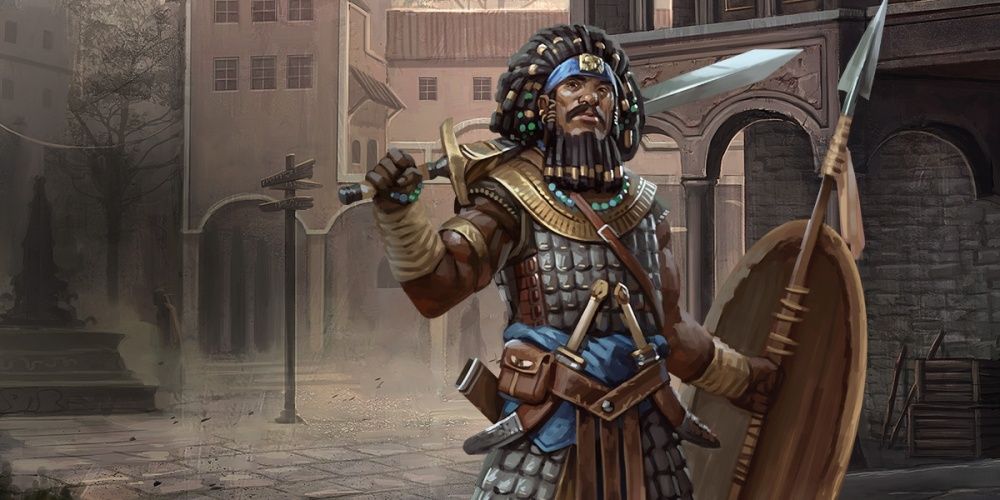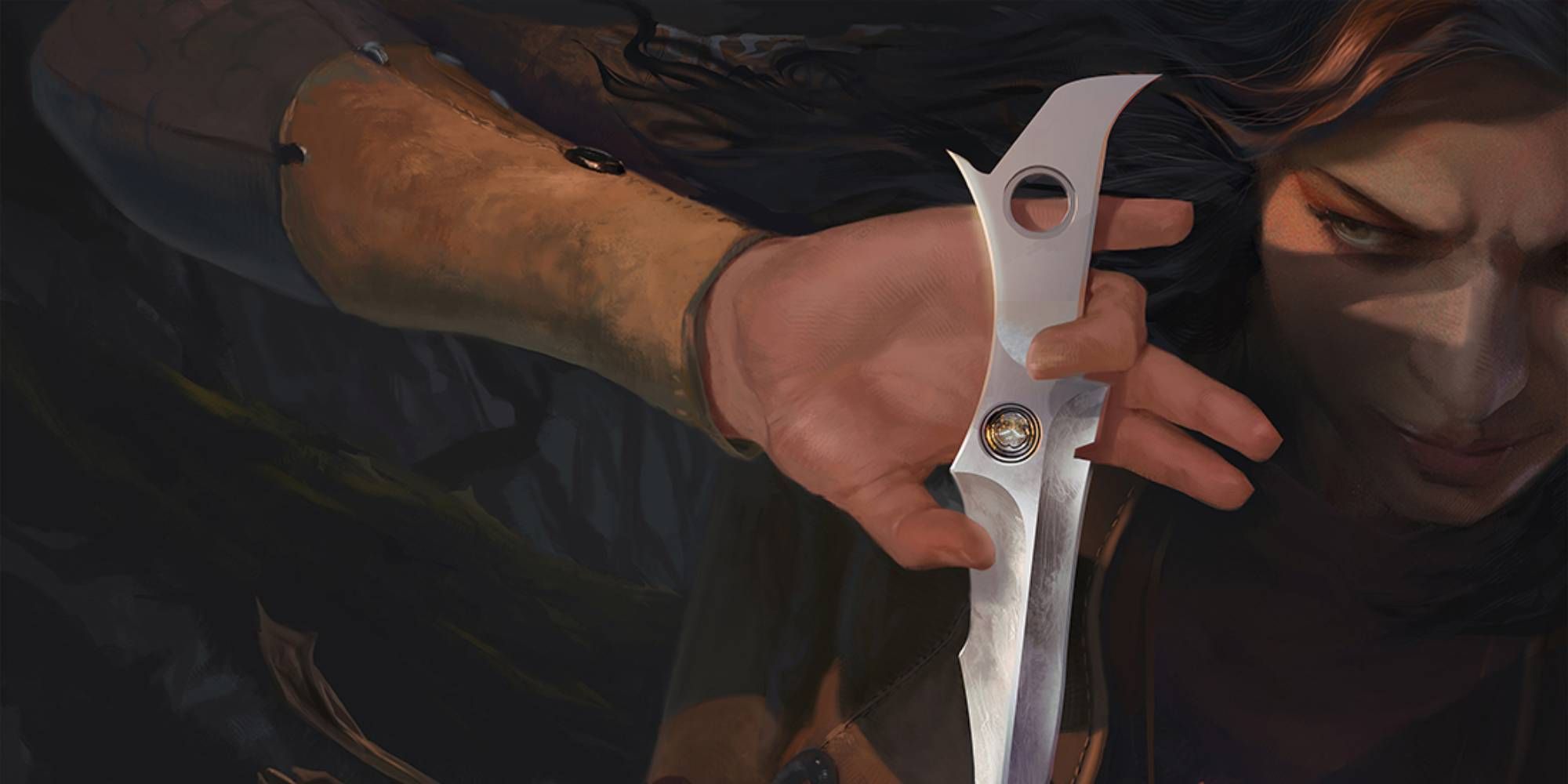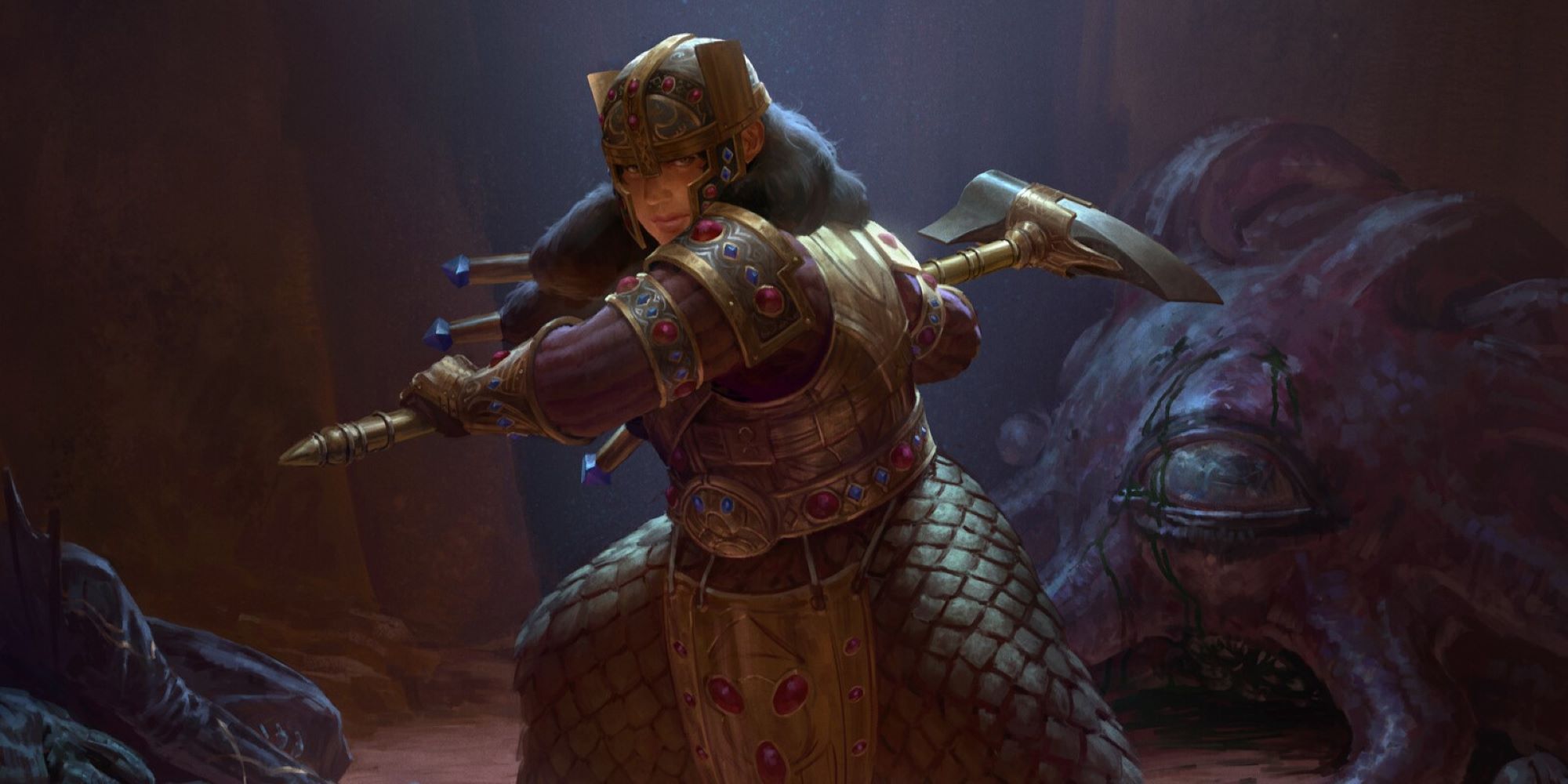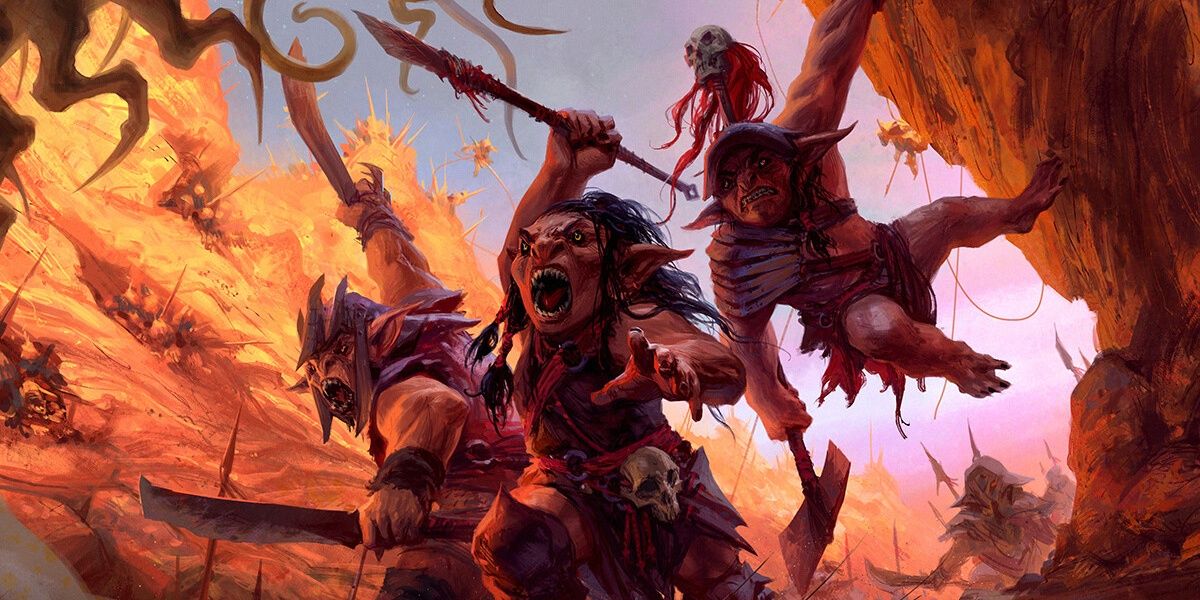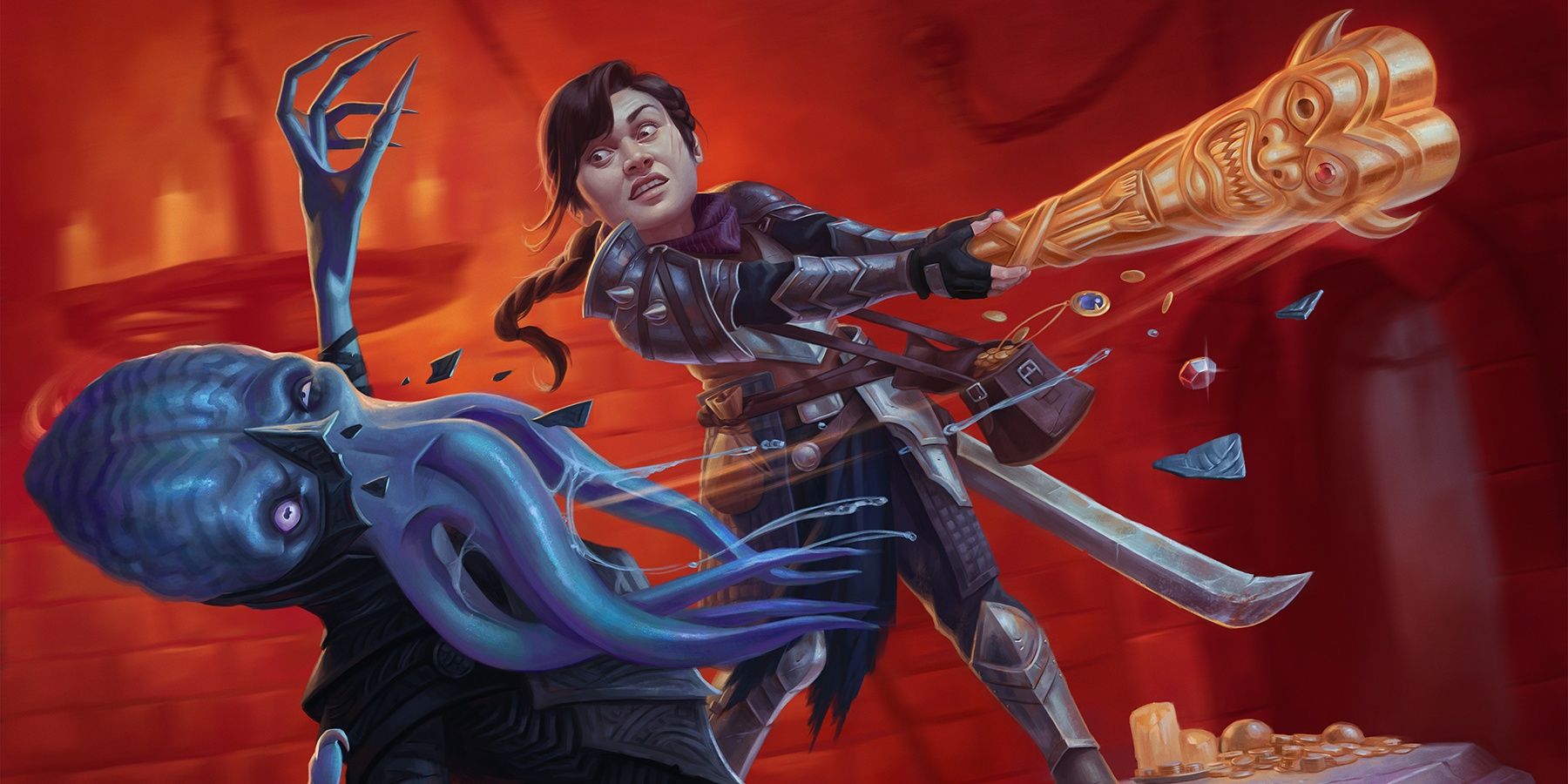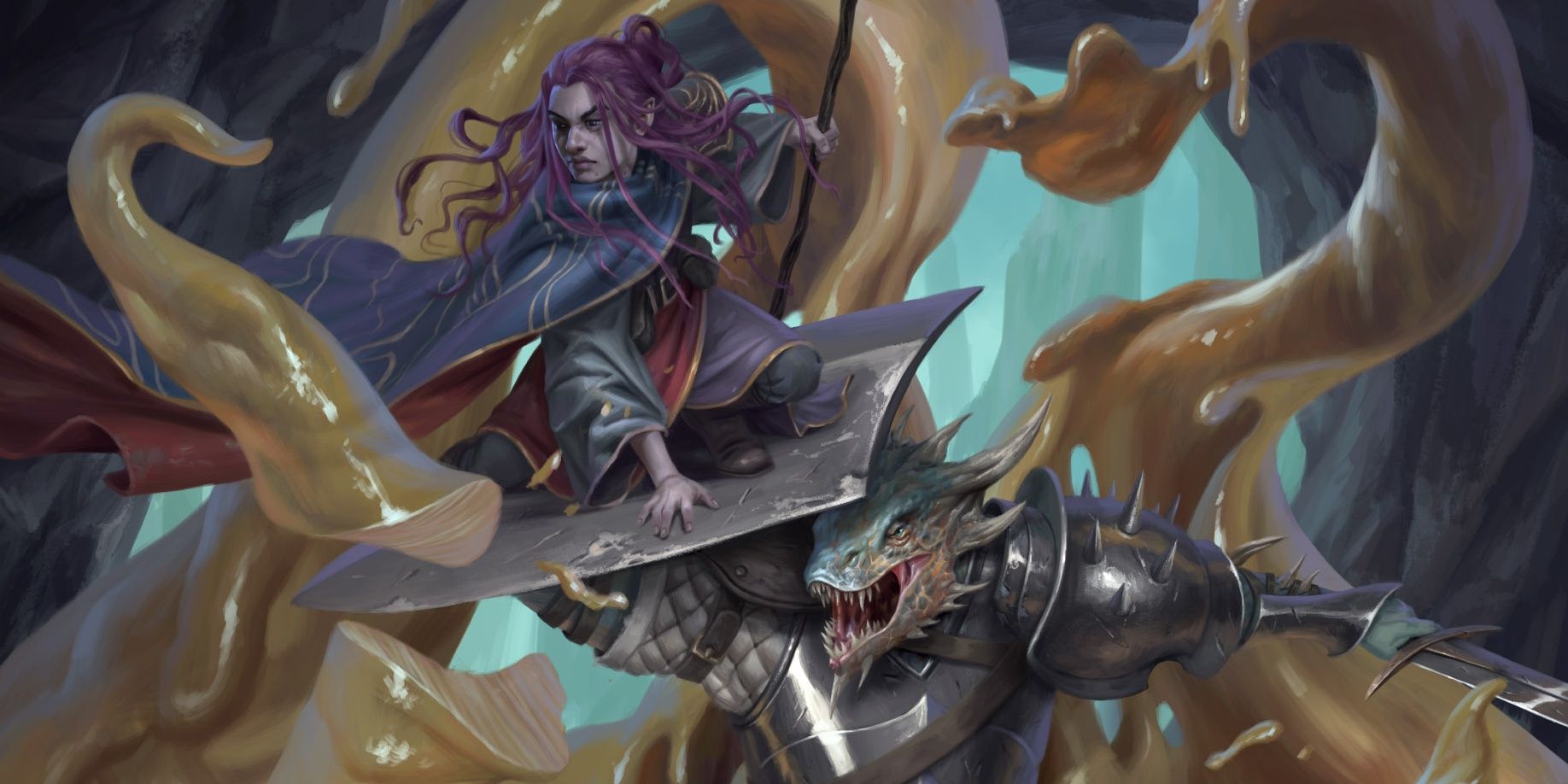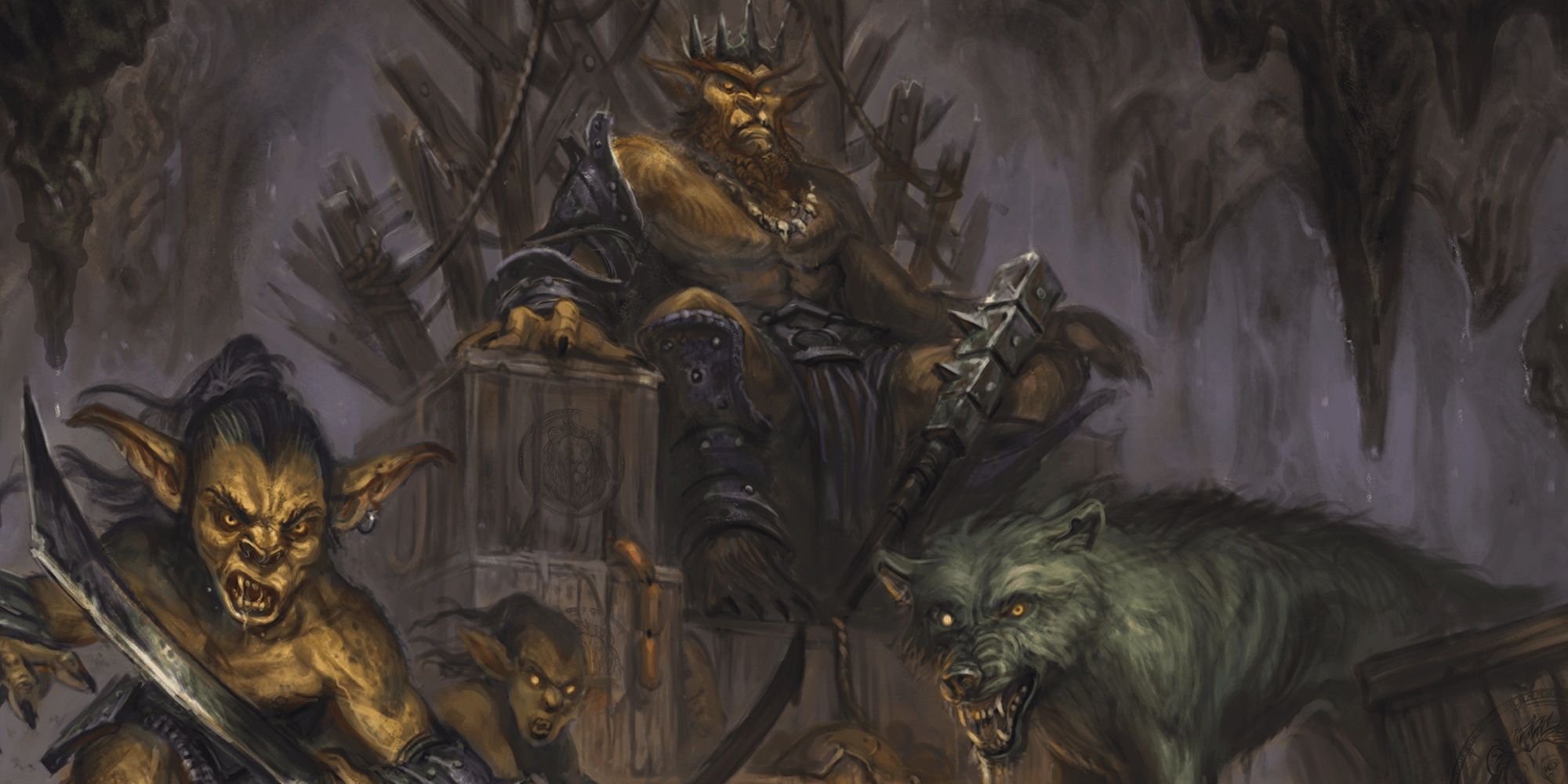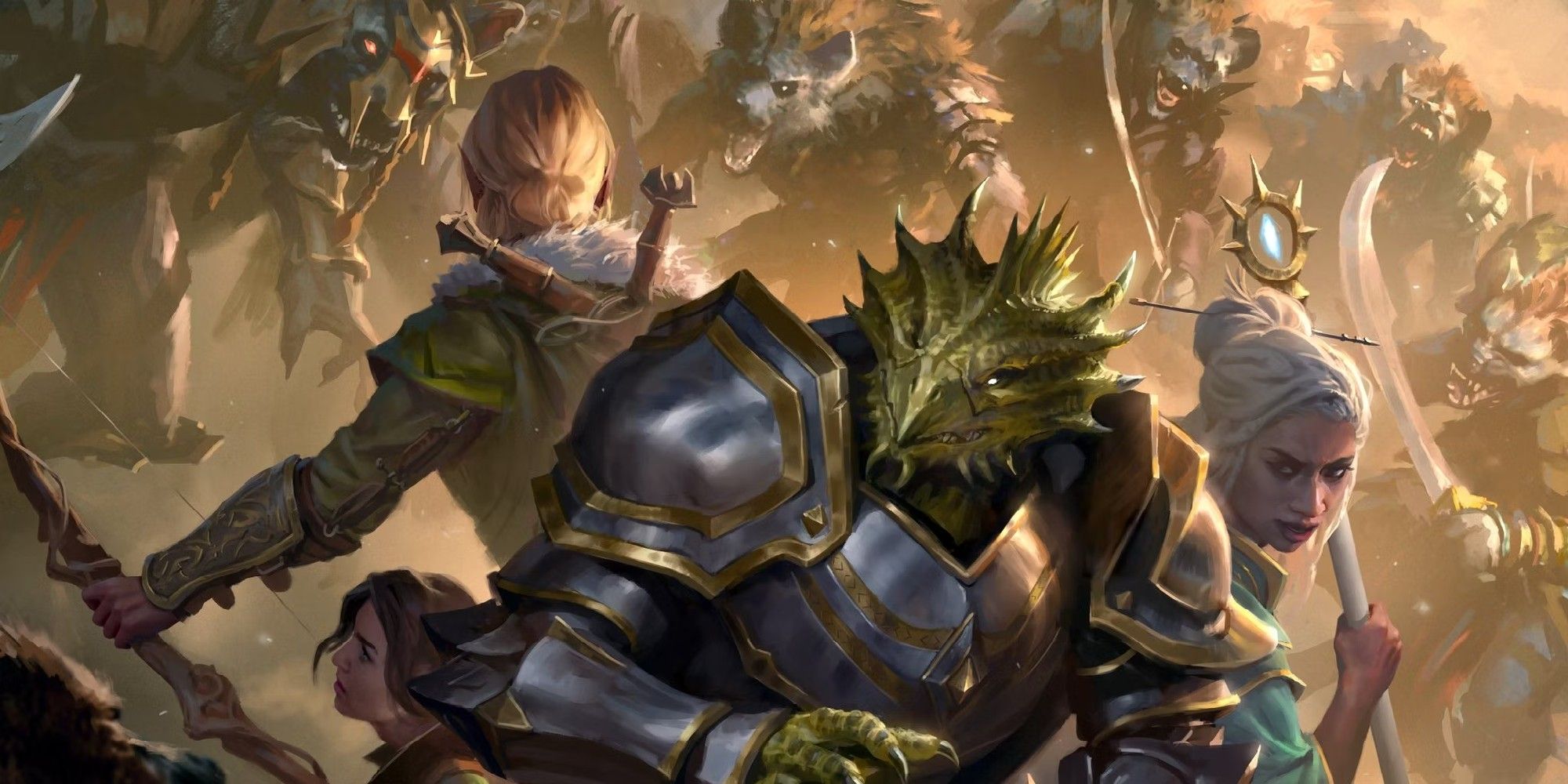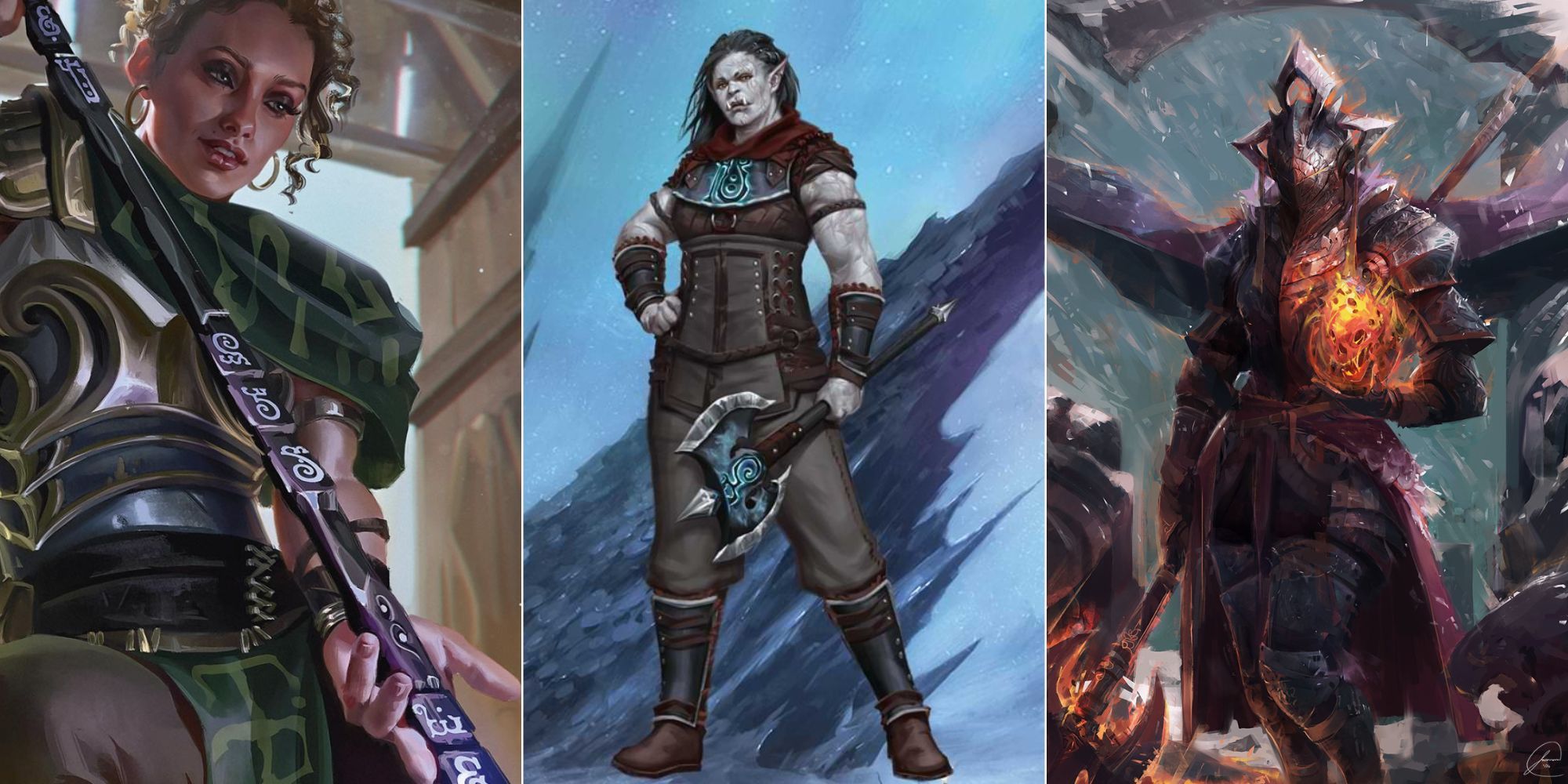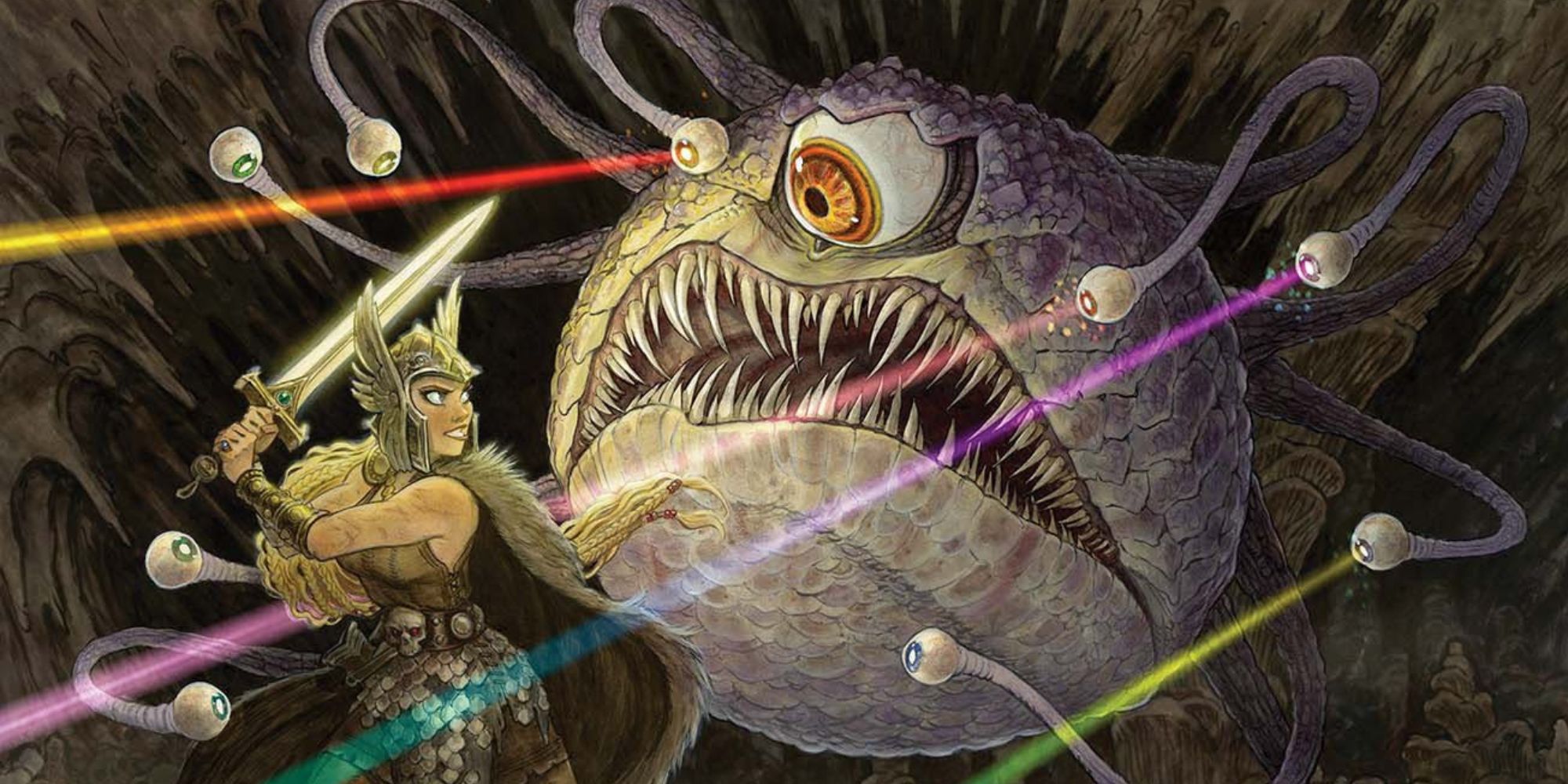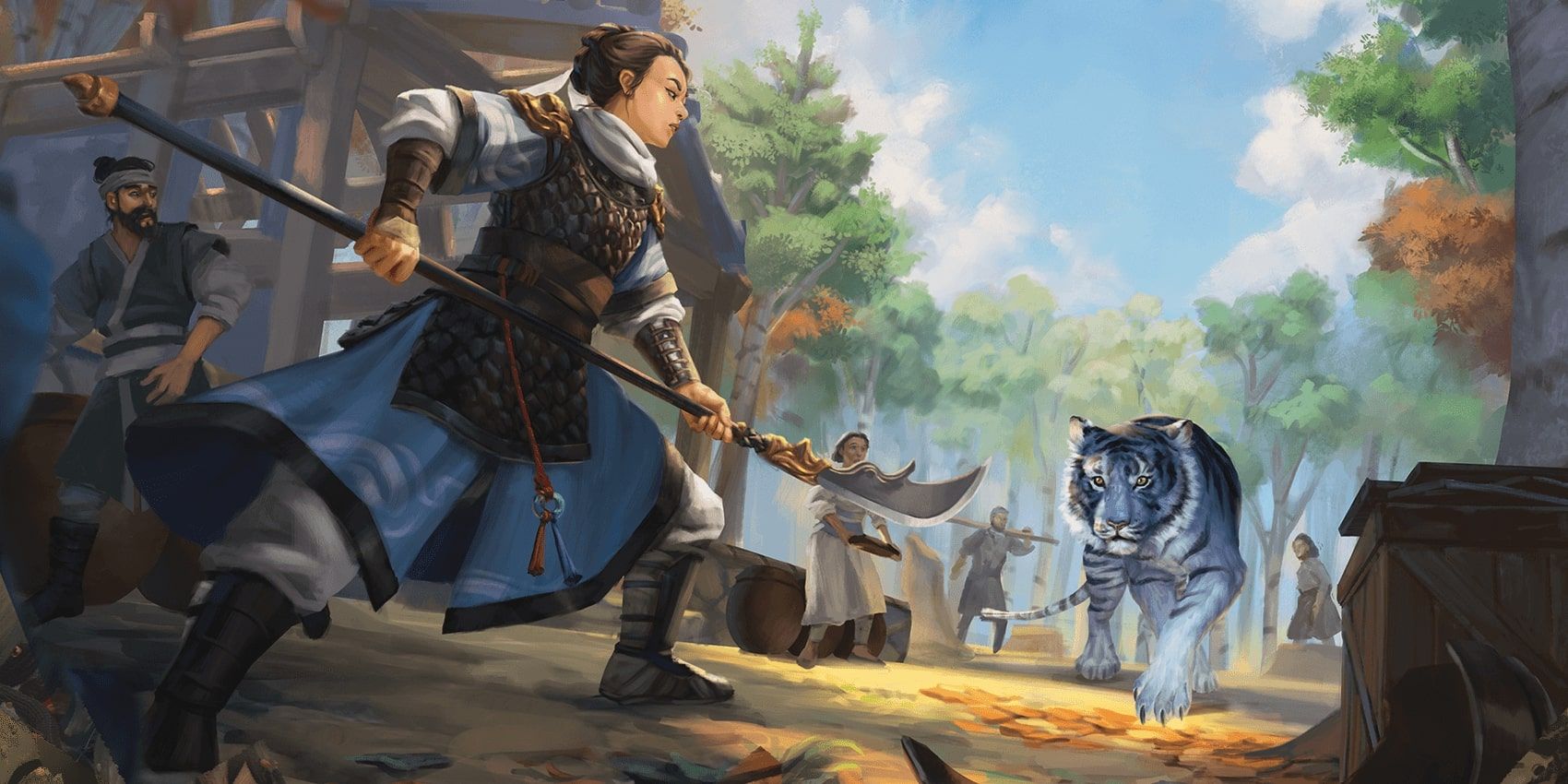Highlights
- Battle Masters in Dungeons & Dragons control the battlefield through tactical combat maneuvers and utilize maneuvers as their primary resources.
- The Battle Master subclass offers a high level of customization and is often regarded as the most choice-driven Fighter subclass.
- Different maneuvers, such as Pushing Attack and Feinting Attack, offer various advantages in combat, from positioning enemies to increasing accuracy.
As the Battle Master walks into the alley, from the shadows appear three men. The shortest of them speaks, "If you don't want any trouble, be a good girl and hand over your coin purse. And leave that sword on your hip too." Undaunted, the Battle Master draws the blade from its sheath and raises her shield. You can bet it won't end well for these ruffians. They chose the wrong victim.
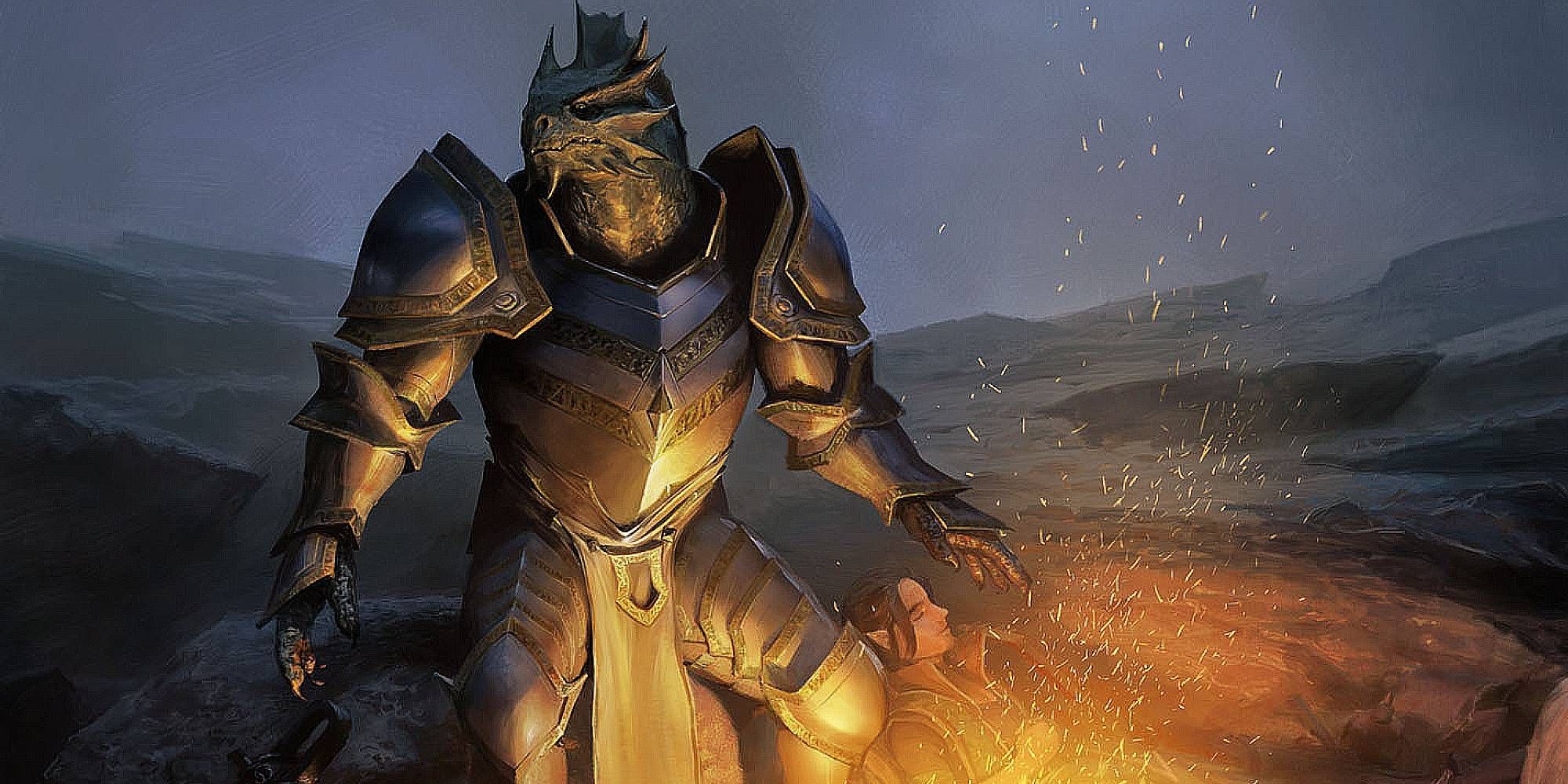
Dungeons & Dragons: How To Build A Banneret Or Purple Dragon Fighter
Craft the perfect Banneret or Purple Dragon Fighter.In Dungeons & Dragons, Battle Masters are the pinnacle of martial achievement. They control the battlefield through deft usage of complex combat tactics, shielding themselves and their allies while simultaneously exposing the enemy. The primary resources they use to accomplish these feats are called maneuvers. Let's see which ones you should consider.
Updated January 15, 2024 by Chris Stomberg: To this day, the battle master remains the most choice-driven Fighter subclass in fifth edition. No other Fighter subclass compares in the amount of customization the Battle Master offers as the list of maneuvers functions as a pseudo-spellcasting list for the class. In fact, many players argue that Battle Master maneuvers should simply be a core feature of the Fighter class instead of being relegated to a subclass. Arguments aside, experience with old maneuvers and the addition of some new ones means this list is ready for a change.
18 Brace
|
Best Uses |
|---|
|
Polearm Master light |
|
Flavor |
This is like the poor man's Polearm Master feat. It does the same thing as one of the feat's features except it doesn't require you to be wielding a weapon with reach, costs you a superiority die, and adds your superiority die to the damage.
Suffice it to say, you're better off taking Polearm Master if you want to enjoy the benefits of this maneuver. After all, a weapon with reach is going to trigger someone walking into your range a lot more often anyway. Nonetheless, this is an option for players who absolutely refuse to part with their beloved greatsword, greataxe, or other non-reach weapons.
17 Rally
|
Best Uses |
|---|
|
Buff your party before a boss fight |
|
Shield someone close to death |
As a bonus action, Rally allows you to give temporary hit points to an ally equal to the roll on your superiority dice plus your Charisma modifier. While easily overlooked, Rally can be a great way to pad your allies hit points, making them harder to take down.
It's also possible to use this maneuver outside of combat, take a short rest to regain your maneuvers, and then go into battle with your whole party's life totals increased. Be advised though, temporary hit points will not revive a player whose already been knocked unconscious.
16 Bait And Switch
|
Best Uses |
|---|
|
Protect a party member |
|
Remove a party member from melee |
|
Buff your AC |
The Bait and Switch Maneuver might be situational, but it is a handy ability for defense if you need to quickly switch positions with any creature, friend or foe, within five feet. The trick is that the creature has to be willing to switch places with you, so it makes more sense to use this with a friendly target.
When you roll your superiority die, the resulting number can be used as an AC bonus for you or your target. This pairs nicely with other Maneuvers like Goading Attack or Menacing Attack that also emphasize the defensive Battle Master build.
15 Pushing Attack
|
Best Uses |
|---|
|
Knock enemies into environment hazards |
|
Knock enemies out of opportunity attack range of your allies |
Pushing attack is great because it gives you some say in where your opponent strikes next by allowing you to position them. Furthermore, the superiority die you roll when using this ability is added to the damage of your attack. Its drawback is that your target must first fail a strength saving throw before you are able to push them fifteen feet.
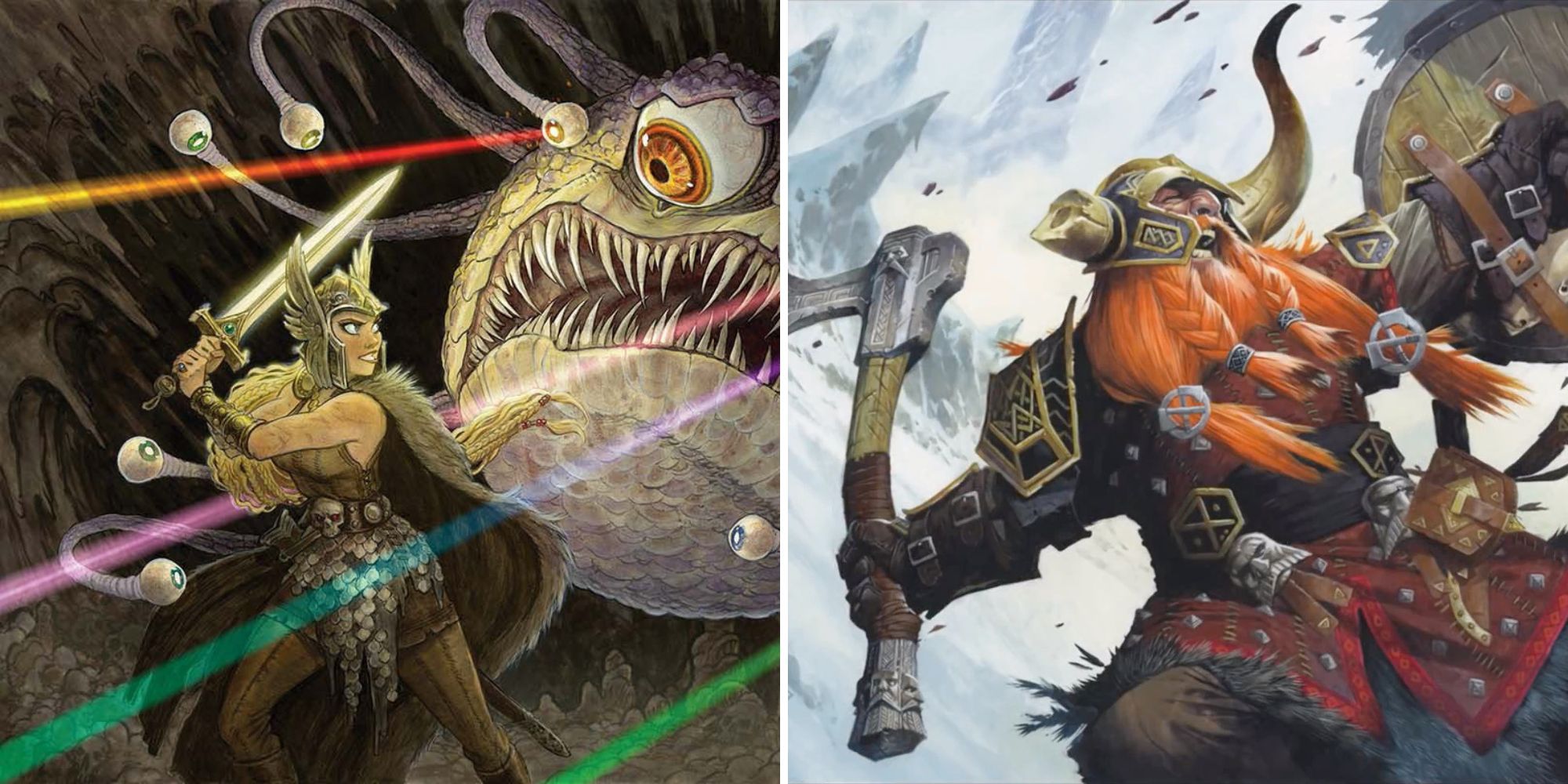
Dungeons & Dragons: How To Build A Battle Master Fighter
Here's how you can make the best Battle Master Fighter build in DnD.However, there are many battlefields where a precarious ledge, pool of acid, or otherwise harmful location exists. Throwing your enemies into harm's way is not only a great tactic, but it's also a very rewarding use of game mechanics that will take the dangers your dungeon master has laid out for you and turn them against his minions.
14 Goading Attack
|
Best Uses |
|---|
|
Protect your allies at your own expense |
|
Stop enemies from killing downed allies |
This maneuver allows you to protect your allies by offering yourself as the target of your foe's ire. The Fighter class is among the characters that are the hardest to take down, so it is often best for everyone if you are the one being attacked. The target must make a Wisdom saving throw. If they fail, their attacks have a disadvantage against anyone other than you until your next turn.
This maneuver functions much like the taunt action prevalent in many other games, nearly forcing the opponent to attack you instead of your allies. If the idea behind your character is to become the shield that defends your loved ones, Goading Attack is the perfect choice for you.
13 Menacing Attack
|
Best Uses |
|---|
|
Inhibit a powerful enemy |
|
Prevent a melee attacker from attacking |
Though it functions differently, it could be said that Menacing Attack is a strictly better goading attack. You add the superiority die to the attack's damage roll, and the target must make a Wisdom saving throw. If they fail, they suffer the Frightened condition until the end of your next turn. A creature that is frightened has Disadvantage on all attacks and ability checks and cannot willfully move closer to the source of its fear as long as that source remains in its sight.
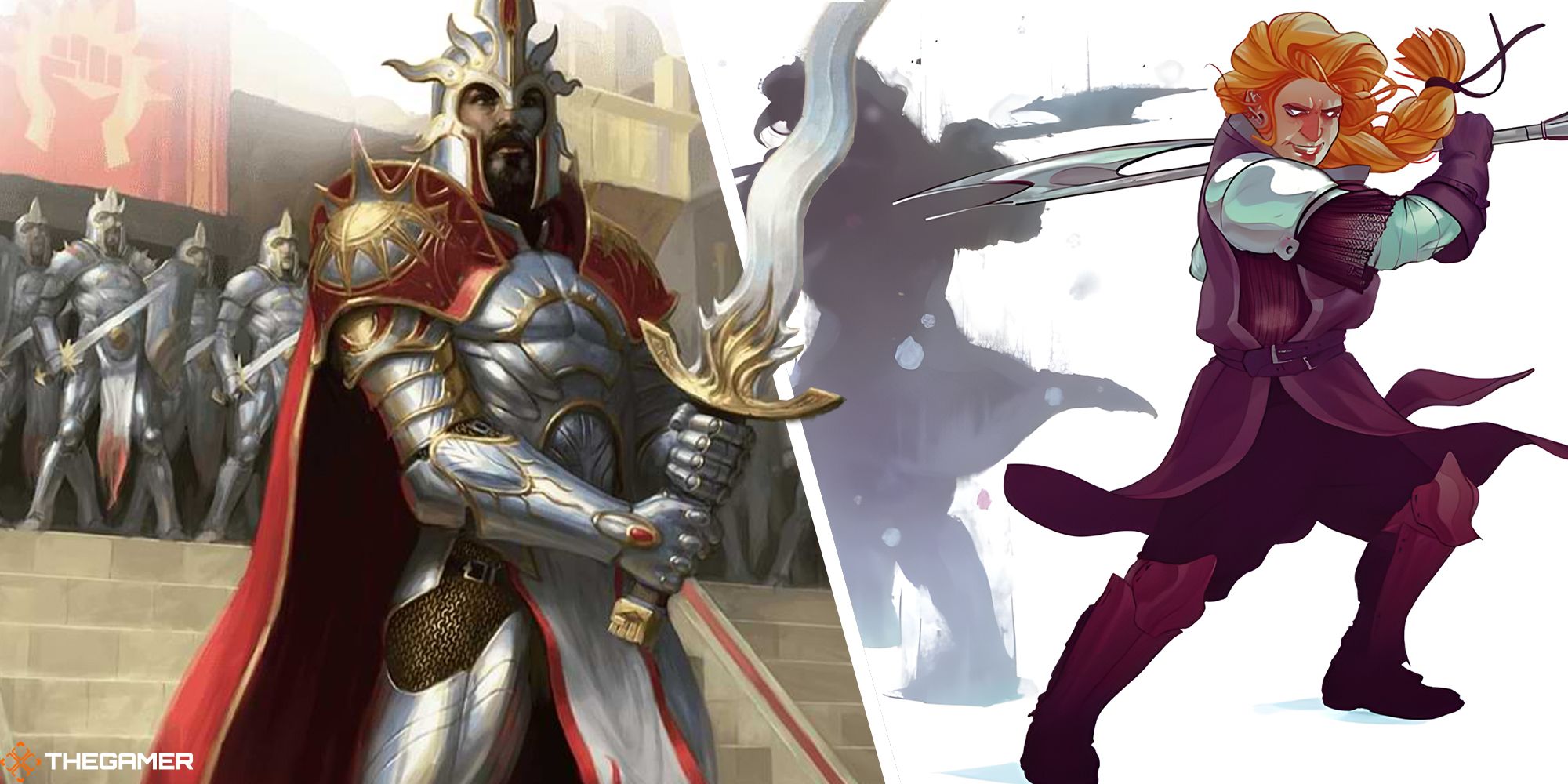
Dungeons & Dragons: How To Build An Echo Knight Fighter
Learn how to build an Echo Knight in D&D, and summon yourself to fight alongside you.That being said, there are a plethora of creatures you will face in Dungeons & Dragons that have immunity to the frightened condition. In other words, Menacing Attack will not work against them. Goading Attack is more reliable even though Menacing Attack is technically better.
12 Parry
|
Best Uses |
|---|
|
Reduce incoming damage |
|
Save yourself from lethal damage |
Parry can be used to reduce the hit points dealt by your opponent during combat. It's a defensive ability and therefore gets less attention because of the lack of drama involved, but being able to mitigate damage of any kind is a nice trick.
When you take a hit that deals damage, you can use your reaction to Parry, which means you roll your superiority die and add it to your Dexterity bonus. Subtract the result from the original amount of hit points. What Parry lacks in flair it makes up for in practicality.
11 Distracting Strike
|
Best Uses |
|---|
|
Let your teammates shine |
|
Critical hit fishing |
Distracting strike allows you to, once again, add your superiority die to your attack's damage roll. Beyond that, it gives the next ally who attacks the creature advantage on their attack roll as long as they attack before your next turn.
Distracting strike becomes even more appealing when you consider that advantage can make your allies' abilities easier to use, for example, the rogue's sneak attack. Lastly, granting advantage gives your friends a greater chance of scoring a critical hit, which will double their overall damage.
10 Quick Toss
|
Best Uses |
|---|
|
Midrange build that uses thrown weapons |
The Quick Toss maneuver allows you to use a thrown weapon in melee combat. If you have a dagger, a dart, or even something bigger like a dagger or ax that's meant to be thrown, you can use it as a close combat weapon.

Dungeons & Dragons: How To Build An Eldritch Knight
Learn how to build an Eldritch Knight in Dungeons & Dragons.That's a handy ability even if you have to use up a bonus action to use it. Drawing the weapon is also a part of the attack and doesn't require a separate action though most dungeon masters forget about this rule anyway.
9 Feinting Attack
|
Best Uses |
|---|
|
Increase your accuracy |
|
Alongside Great Weapon Master |
Why give Advantage to someone else when you can make better use of it yourself? If that's the question you've been asking, then the Feinting Attack Maneuver is what you'll want. It costs a bonus action in addition to your superiority die to use, but the result is advantage on your next attack.
The superiority die is added to the damage. This maneuver is especially great when combined with feats that increase your damage at the cost of accuracy, such as Great Weapon Master, since it accommodates for the penalty you have applied to your attack.
8 Lunging Attack
|
Best Uses |
|---|
|
Alongside a reach weapon |
This ability is used to increase your reach with your weapon by four feet. That alone makes it a huge advantage for your character. A superiority die is used to extend your reach for a single turn. That roll is added to the damage, provided that you hit your target. Fighters already using a reach weapon can hit a creature from 15 feet away which is pretty impressive for a melee weapon.
7 Sweeping Attack
|
Best Uses |
|---|
|
Against many weak enemies |
The Sweeping Attack is the D&D version of cleave, which allows your attack to hit more than one opponent in the same turn. You need to use one roll of your superiority die to damage another creature within a five-foot radius.
If you succeed in hitting the first creature, you also succeed in hitting the second equal to whatever you rolled with your superiority die. It counts as the same type of damage, whether it's piercing, slashing, or bludgeoning, plus whatever magical bonuses your weapon might have.
6 Commander's Strike
|
Best Uses |
|---|
|
Combo with allies |
|
Let your teammates shine |
Sure, this maneuver costs one of your attacks and your bonus action to be used. That's asking a lot just to let one of your allies attack instead of you. However, the right party composition can make devastating use of this maneuver.
For instance, Rogues can trigger their sneak attack a second time in a round through this maneuver. Other melee characters with a feat like crusher that allows them to push enemies might be able to knock someone off a cliff or into a pit of lava with this added attack. Commander's strike is begging for your party to come up with cool combos. It deserves a high spot on this list for that reason alone.
5 Ambush
|
Best Uses |
|---|
|
Kill enemies before they get a turn |
|
Turn a stealth failure into a success |
Any intermediate player in Dungeons & Dragons knows that rolling a high initiative is a huge boon in almost all combat scenarios. The chance to go before your opponents allows you to potentially kill an enemy before they get a turn or take advantage of superior battlefield positioning.
Ambush lets you add your superiority die to your initiative roll, giving you that extra edge when you need it. Additionally, you can also use this maneuver to buff up any stealth rolls you make. This is more of a niche usage case, but it comes up more often than you might think.
4 Precision Attack
|
Best Uses |
|---|
|
Ensuring attacks hit |
|
Combined with Great Weapon Master |
Feinting attack may give you Advantage, but Precision Attack makes it so that your superiority die is added directly to your attack roll. What makes it really superb though, is your ability to decide to use it after the attack roll is made.
Whereas you may waste a superiority die with feinting attack by giving yourself Advantage on an attack roll that was destined to hit, Precision Attack allows you to take an attack you already know will miss and turn it into a hit. It is worth noting that this maneuver does not add your superiority die to the attack's damage, like most others. But that's a cost well worth paying to ensure your attack lands.
3 Maneuvering Attack
|
Best Uses |
|---|
|
Better battlefield positioning |
|
Avoiding opportunity attacks |
Maneuvering attack is interesting because although it may be one of the best maneuvers, it is rarely selected. When you hit with a weapon attack, you may use Maneuvering Attack to roll your superiority die and add it to the attack's damage. What's amazing about Maneuvering Attack is that it then allows an ally to use their reaction and move up to fifteen feet without provoking opportunity attacks from the target of your attack.
This maneuver is a saving grace for any friend whose life has been put in danger. It's the only maneuver available to Battle Masters that could prevent a character's death. In the archetypal Dungeons & Dragons party, this truly is the main function of the Fighter class, to protect your friends by putting your own life on the line.
2 Trip Attack
|
Best Uses |
|---|
|
Crowd control |
|
Knocking down flying opponents |
|
Providing advantage to melee attackers |
Speaking of advantage, Trip Attack is capable of granting it to more than one ally given that those allies are attacking from melee range. You will add your superiority die to the attack's damage. The target then must make a Strength saving throw. If they fail, they are knocked prone.
The Prone condition makes it to where all melee attacks have advantage against the enemy at the cost of ranged attacks suffering disadvantage. The enemy also must use half of their movement to stand back up. In the right situation, Trip Attack is a more effective distracting strike, if less reliable.
1 Riposte
|
Best Uses |
|---|
|
Additional damage |
|
Better action economy |
In reality, most of us play D&D to have fun while slaying monsters, not protect our weakling party members. For this reason, Riposte stands head and shoulders above every other maneuver. When a creature hits you with a melee attack, Riposte allows you to use your reaction and expend one superiority die to make a melee attack against that creature.
If you hit, the superiority die is added to the attack's damage. In simpler terms, Riposte gives your character a possible extra attack. With riposte, vengeance will be yours, and it will be quick.
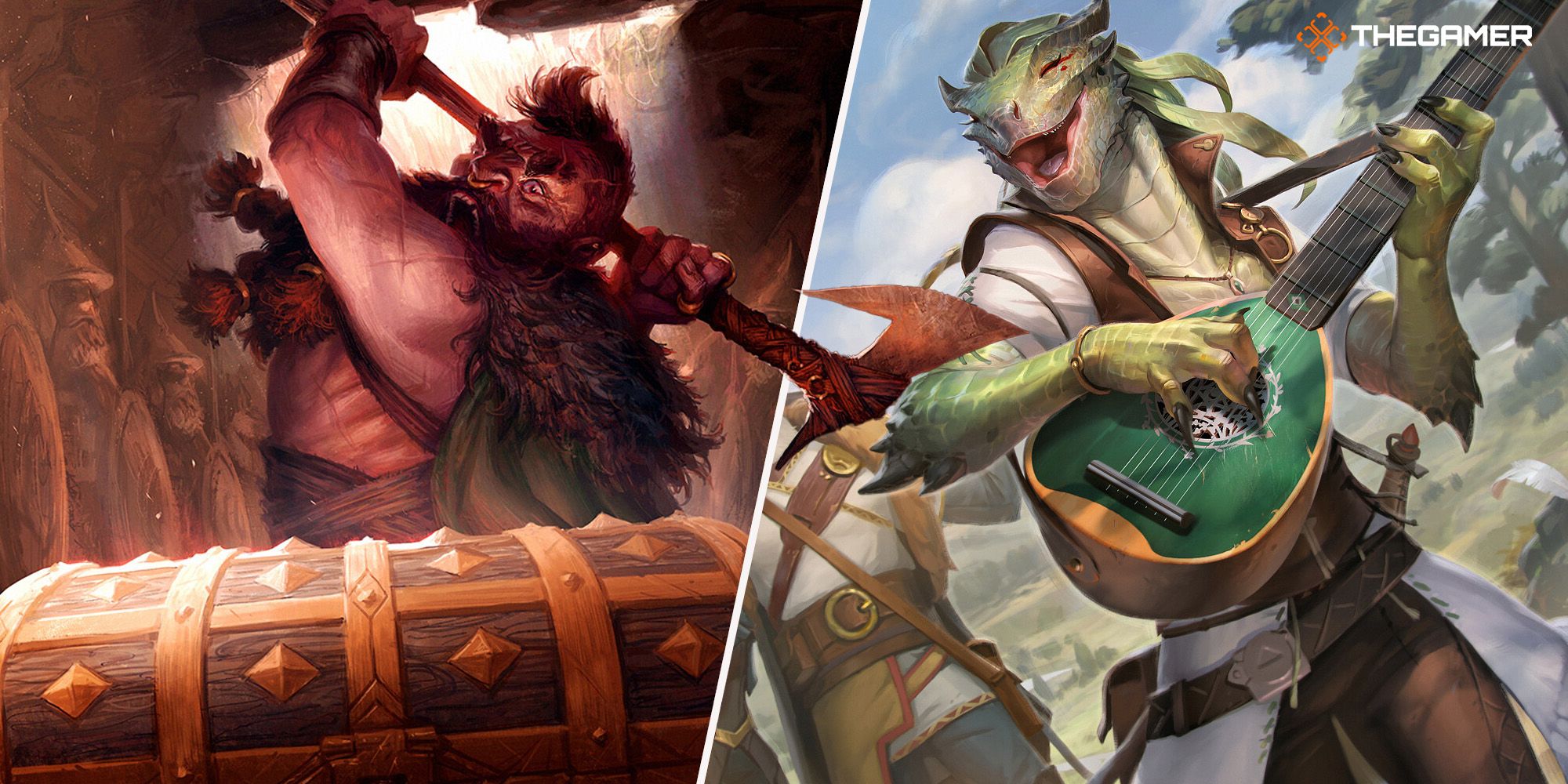

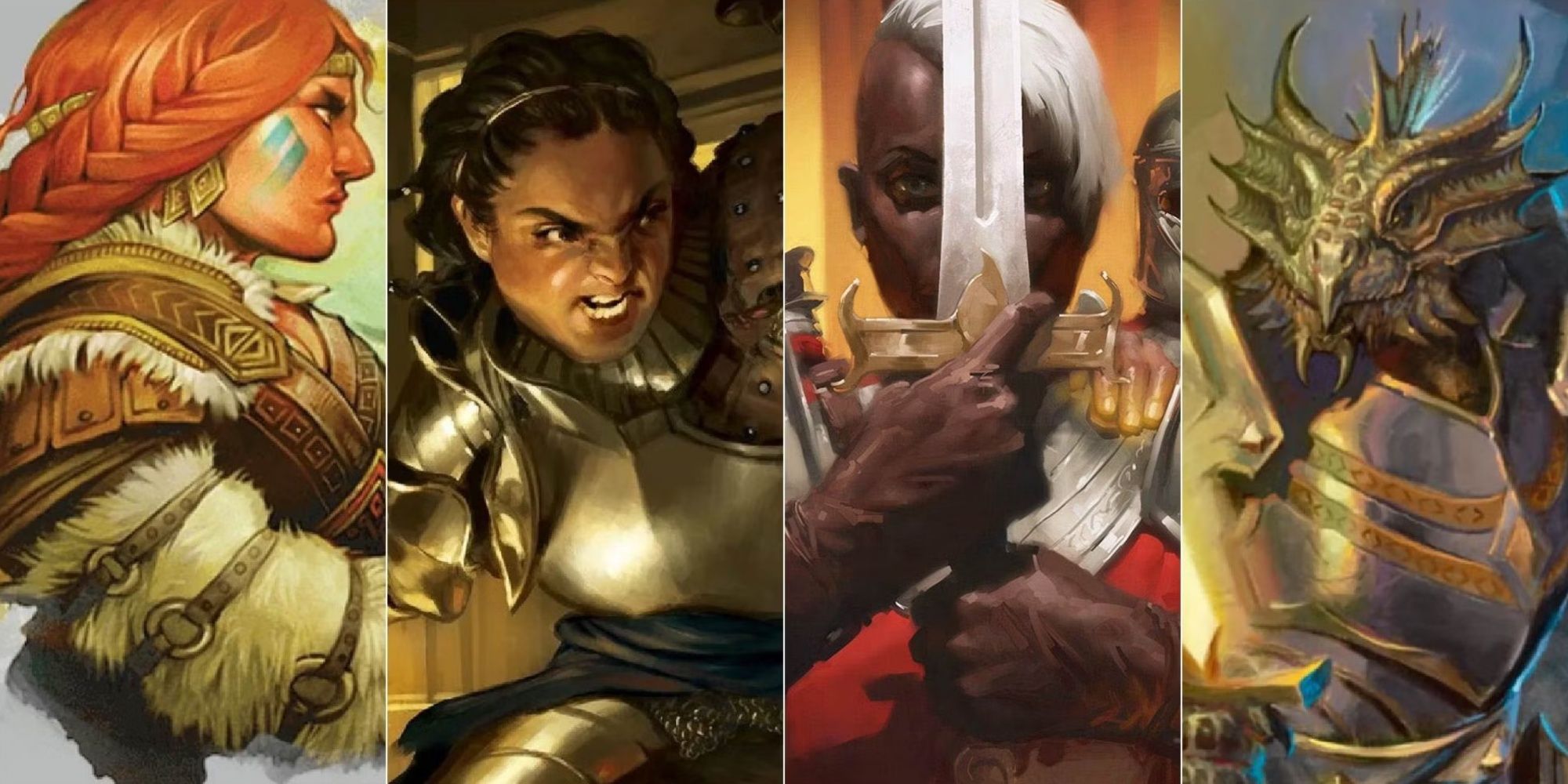
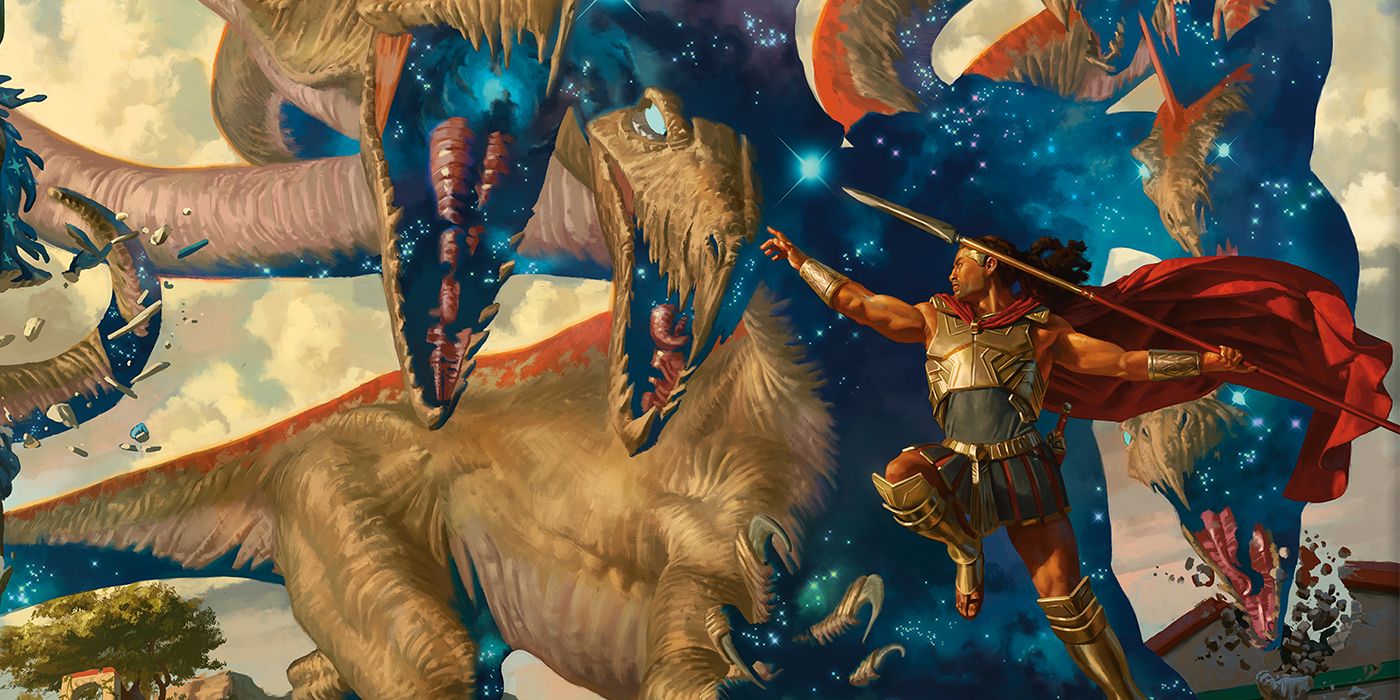
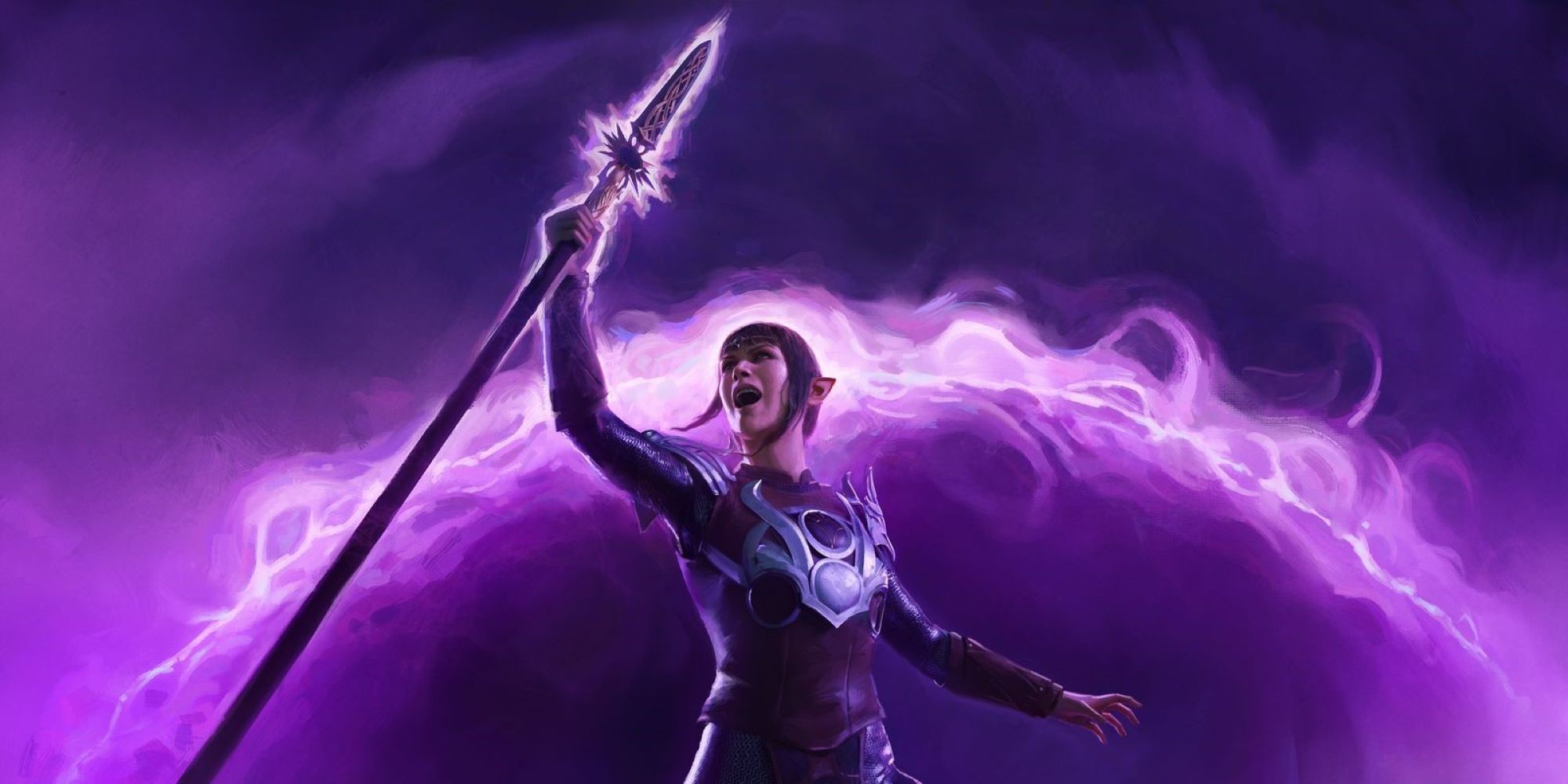
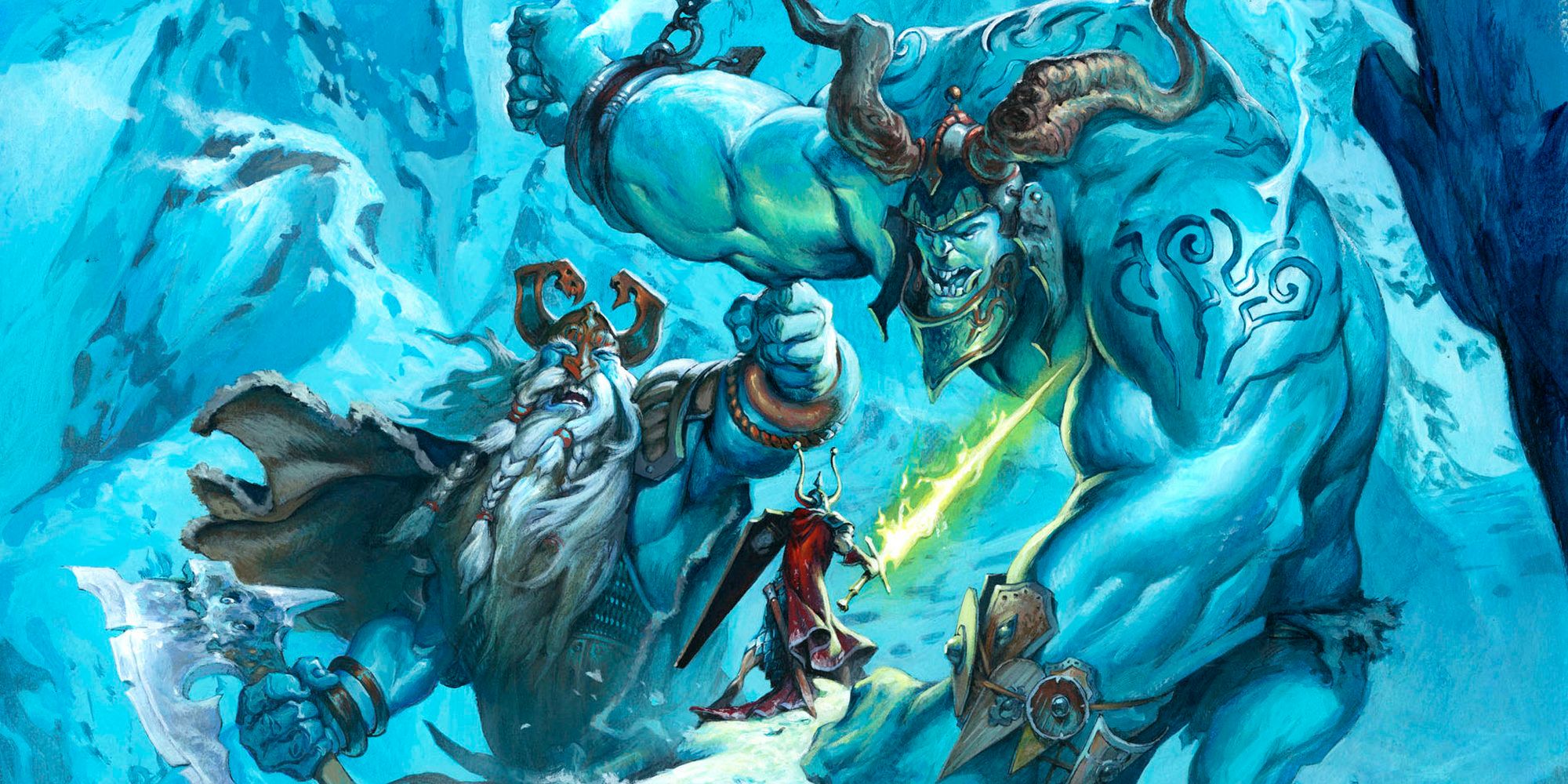
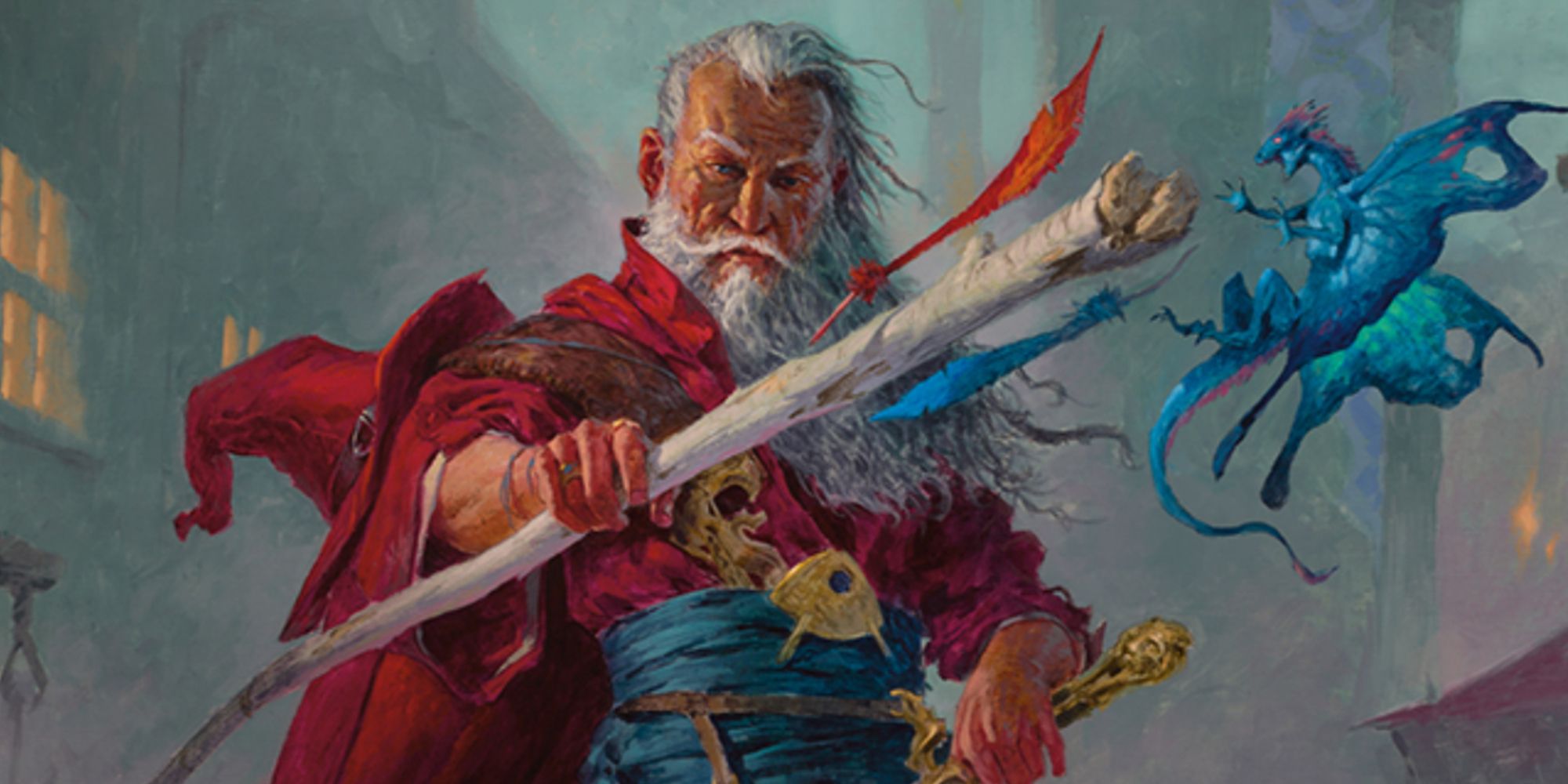
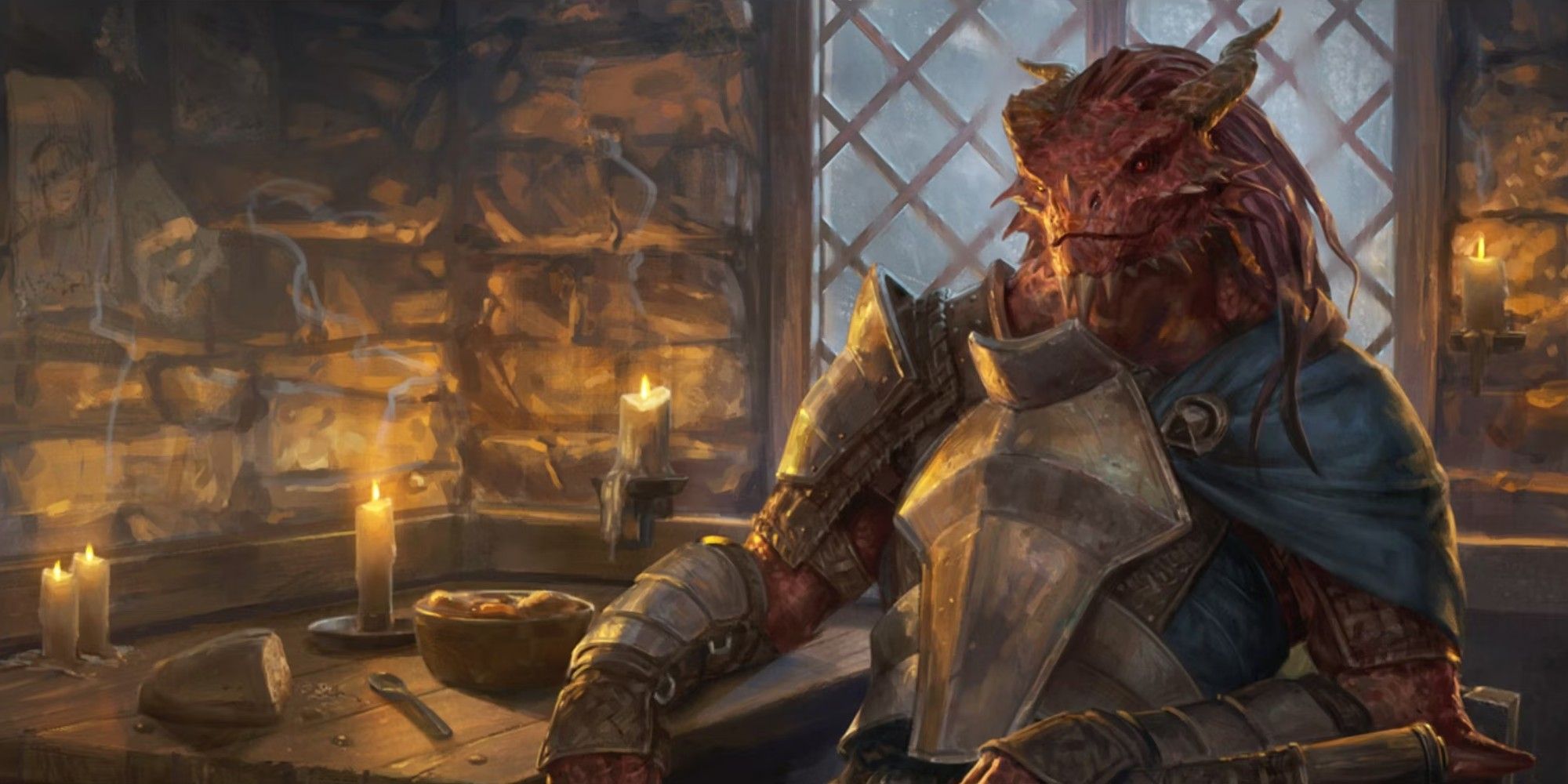
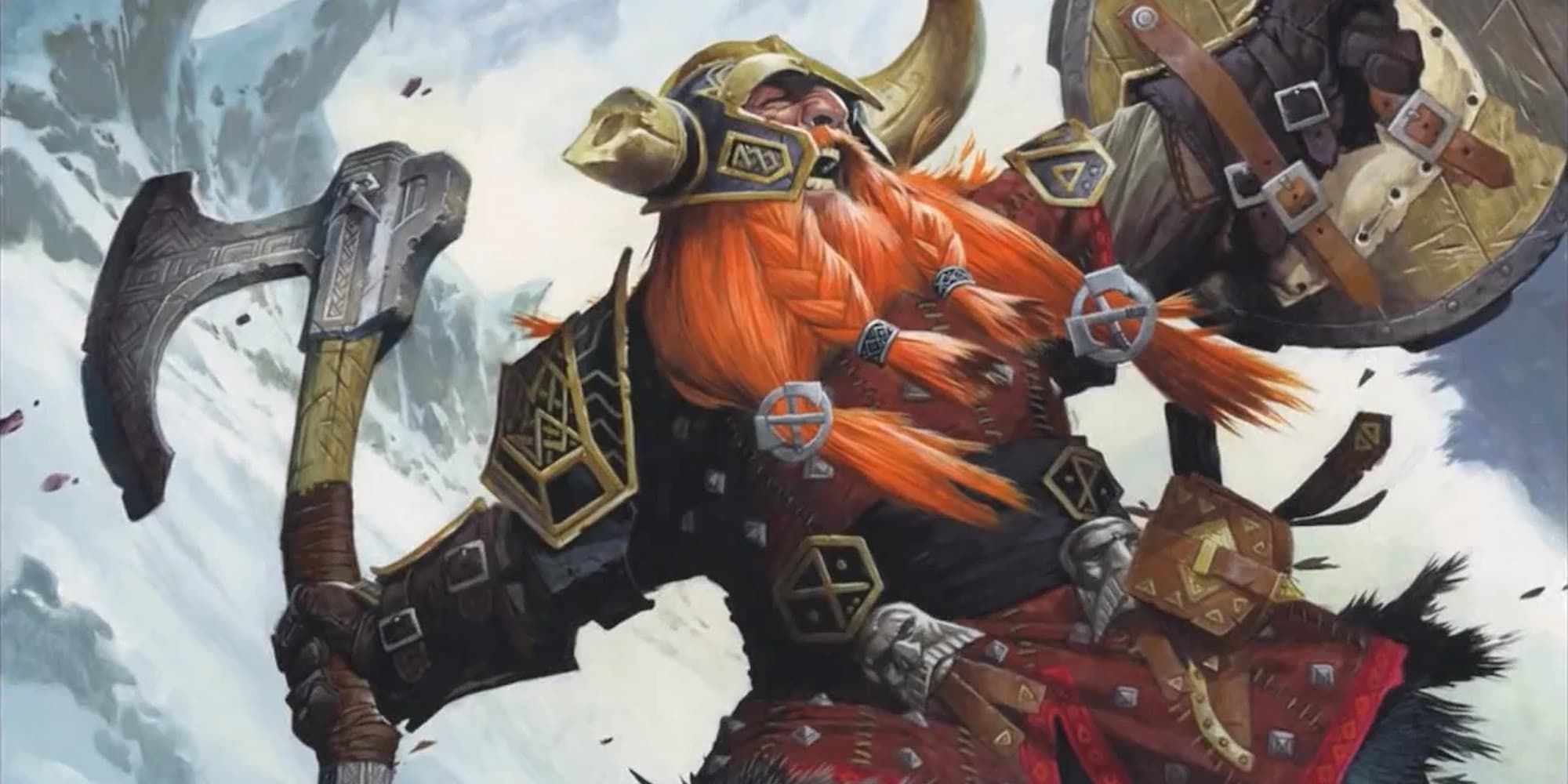
-MtG-Art-by-Alessandra-Pisano.jpg)
